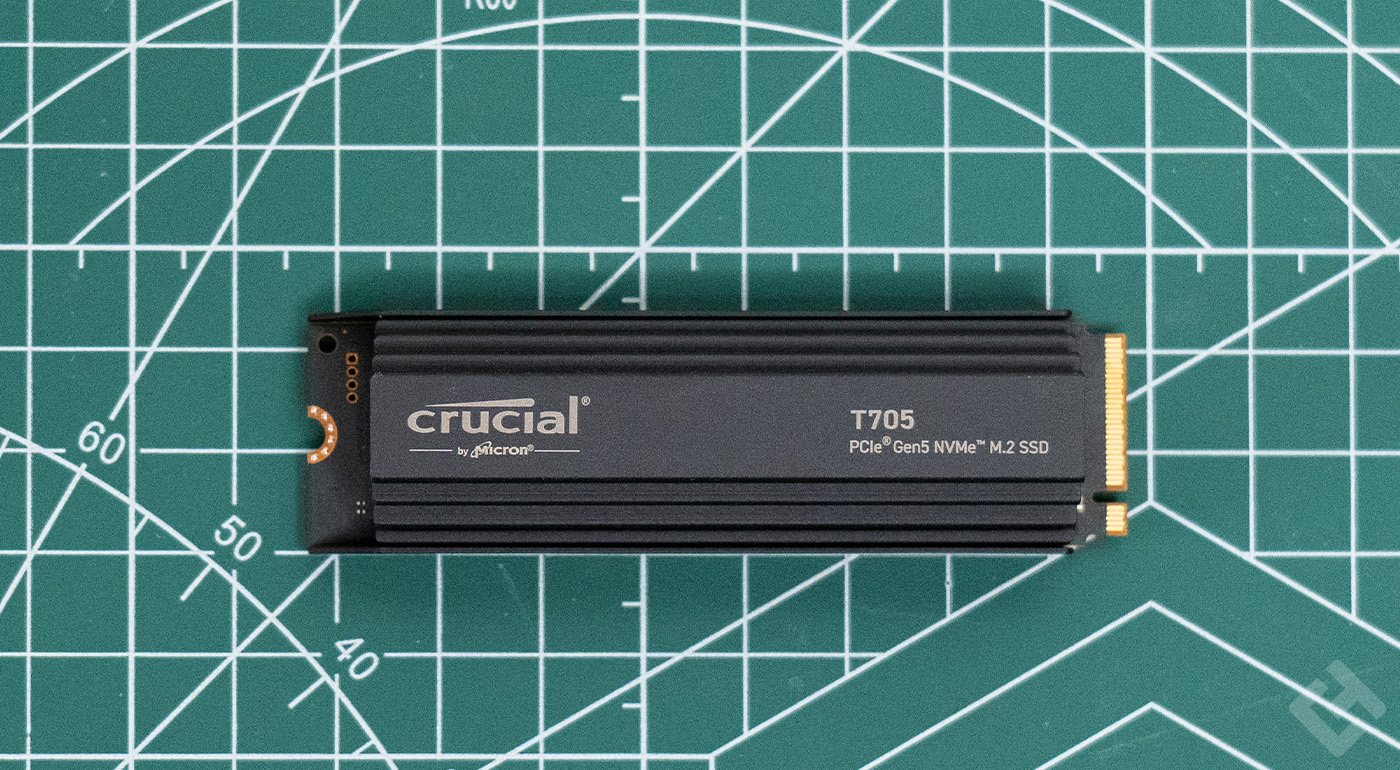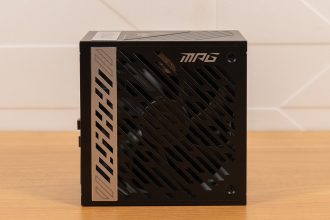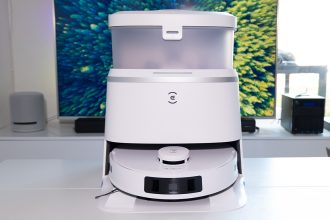Crucial, one of the world’s leading SSD manufacturers, along with its parent company Micron, has unveiled its new PCIe 5 SSD, the Crucial T705. Following on from the success of the Crucial T700 and Crucial T500, the manufacturer has now taken on the challenge of an even faster PCIe 5 SSD, with top-flight performance. However, here, the heatsink is integrated by default, which doesn’t help.
Design and aesthetics
It’s no secret that the Crucial T705 comes with a bulky pre-applied heatsink. It’s as if it’s stuck in the heatsink, and frankly, I wouldn’t recommend removing it. However, the problem is exactly the same as on the Corsair MP700 Pro: the heatsink is certainly very practical, but it’s compulsory on this SSD.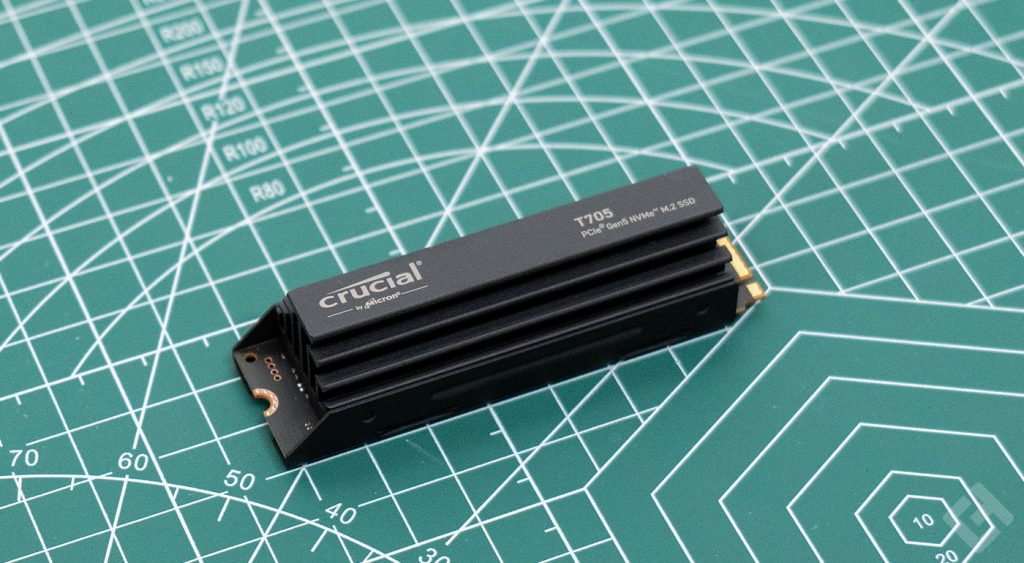 However, which motherboards currently offer PCIe 5 connectors? The top-of-the-range models, in fact, which also offer an integrated heatsink for your SSDs, and sometimes a good one!
However, which motherboards currently offer PCIe 5 connectors? The top-of-the-range models, in fact, which also offer an integrated heatsink for your SSDs, and sometimes a good one!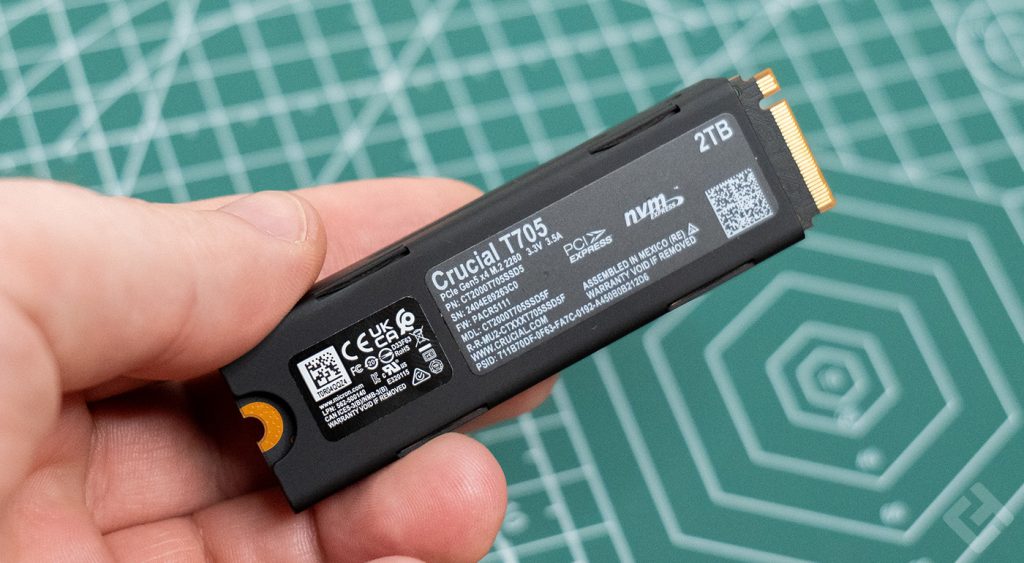 Admittedly, a version without a heatsink is marketed, but in my opinion, you should be able to choose and mount the SSD in the heatsink yourself, via a simple system. It shouldn’t be fitted as standard. In any case, the heatsink is elegant and rather slender here, with rather original shapes, and no integrated fan as with Corsair.
Admittedly, a version without a heatsink is marketed, but in my opinion, you should be able to choose and mount the SSD in the heatsink yourself, via a simple system. It shouldn’t be fitted as standard. In any case, the heatsink is elegant and rather slender here, with rather original shapes, and no integrated fan as with Corsair.
Crucial T705 specifications
| Model | Crucial T700 Pro |
| Storage capacity | 1 TB, 2 TB, 4 TB |
| Maximum read speed | 12400 MB/s |
| Maximum write throughput | 11,800 MB/s |
| Disk format | M.2 |
| Interface | NVMe PCIe 5 |
Crucial T705 performance
To measure the performance of this Crucial T705, I took out my usual measurement software, CrystalDiskMark and ATTO. Normally, with an integrated heatsink, it shouldn’t do badly. While PCIe 5 technology is still in its infancy, it is gradually evolving towards even higher data rates and speeds than a few months ago, which isn’t a bad thing. Above all, it’s emerging, because we saw PCIe 5 SSDs some time ago, with huge heatsinks and excessive temperatures. Now, the worry seems to have been resolved.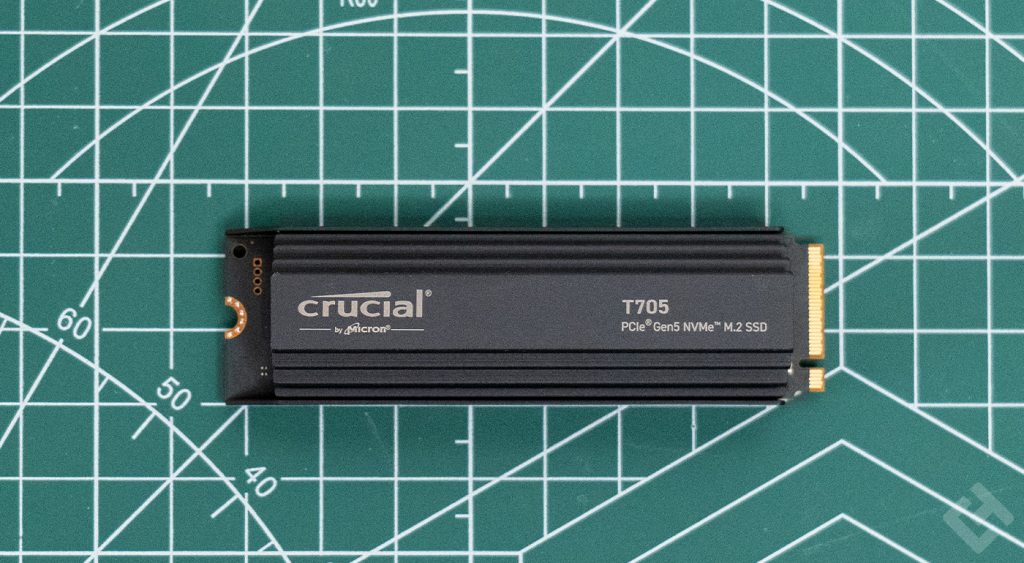 First of all, here’s the configuration used for this test:
First of all, here’s the configuration used for this test:
- Motherboard: Asus Z790-E Gaming WiFi II
- Processor: Intel Core i9 13900K
- RAM: Crucial DDR5 Pro 6000 MHz
Here are the data rates measured with the various benchmark software programs:
CrystalDiskMark
CrystalDiskMark is very useful for testing SSDs on small and large quantities of data. Here, we can see that the Crucial T705 lives up to its promises. Although maximum data rates are not always achieved, the SSD needs to be very well cooled to maintain them. So, with a graphics card on top, it’s not always easy.
On the other hand, the SSD exceeds 14 GB/s read speed, which is fully satisfactory, for an achievable maximum of 14.5 GB/s, i.e. 14500 MB/s. This is excellent, and I can’t help but be very pleased with the performance of such a product, which offers colossal speeds, but which we really need?
ATTO
ATTO is very handy for testing SSDs on small amounts of data. Here, however, where I was expecting some weaknesses at the start of the run, the Crucial T705 proves to be very enduring and fast almost from the outset. Admittedly, the first values are not revealing, which is why I now offer you this table, which is more readable and practical.
!function(e,n,i,s){var d=”InfogramEmbeds”;var o=e.getElementsByTagName(n)[0];if(window[d]&&window[d].initialized)window[d].process&&window[d].process();else if(!e.getElementById(i)){var r=e.createElement(n);r.async=1,r.id=i,r.src=s,o.parentNode.insertBefore(r,o)}}(document, “script”, “infogram-async”, “https://e.infogram.com/js/dist/embed-loader-min.js”); The results are excellent, it’s a real pleasure to see an SSD doing so well!
Crucial T705 review
The Crucial T705 SSD is a high-performance model that’s really worth its weight in gold. Speeds are delightful, with read speeds approaching 15 GB/s, something that would have been improbable even a few years ago. Here, high-volume performance means you can do it all, and it’s not the SSD that will limit anything in your machine.


